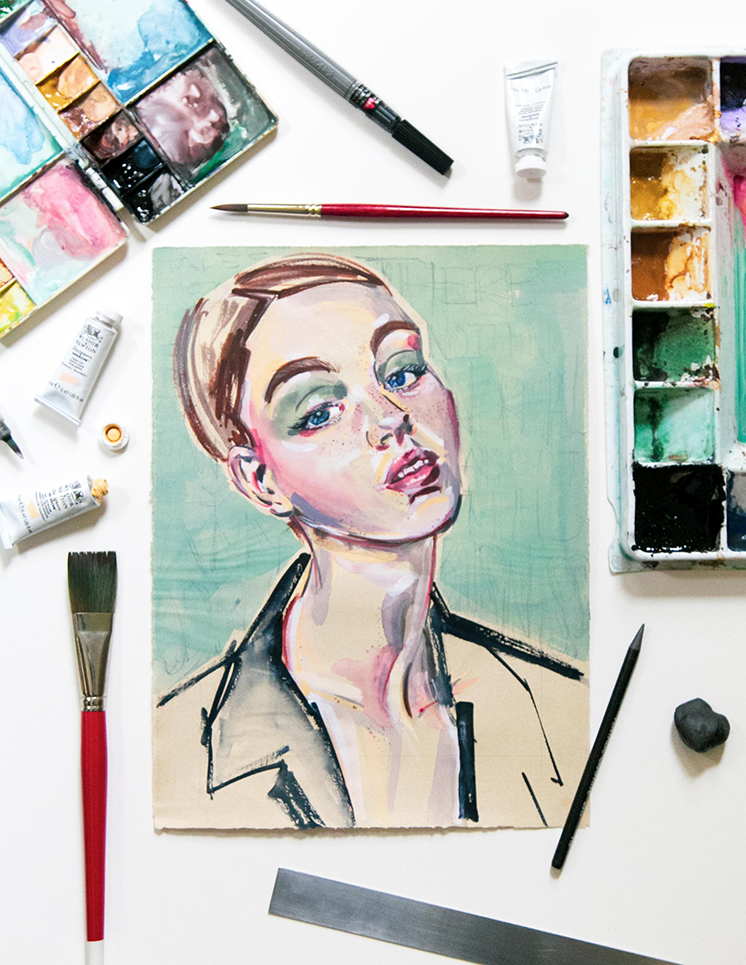 We are so thrilled to be featuring Victoria Riza as this month’s illustrator feature. Victoria was my intern many moons ago and it has been such a treat to see her setting out on her artistic path. I loved hearing her insights on how her upbringing and cultural background has influenced her path in the industry. From the get-go, Victoria has wanted to go into fashion illustration so I could think of no one better to illustrate our book of the month than her. If you’ve been reading this month’s book club pick, Tales from the Back Row, you’ve gotten a glimpse of that. Download this month’s book art illustrated by Victoria and take a look at her story, her favorite podcast, and advice on how to overcome setbacks. She’s also sharing the process she used to create the poster she created for us.
We are so thrilled to be featuring Victoria Riza as this month’s illustrator feature. Victoria was my intern many moons ago and it has been such a treat to see her setting out on her artistic path. I loved hearing her insights on how her upbringing and cultural background has influenced her path in the industry. From the get-go, Victoria has wanted to go into fashion illustration so I could think of no one better to illustrate our book of the month than her. If you’ve been reading this month’s book club pick, Tales from the Back Row, you’ve gotten a glimpse of that. Download this month’s book art illustrated by Victoria and take a look at her story, her favorite podcast, and advice on how to overcome setbacks. She’s also sharing the process she used to create the poster she created for us.
Let’s get to the interview of this month’s illustrator feature!
Illustrator Feature: Victoria Riza
1. How did you get your start as an illustrator? How did your illustrative style develop, specifically with your fashion emphasis?
When I started university, my focus was on graphic design because I made the mistake of believing that graphic design was the only creative job that one could make a living on. I was struggling creatively in that emphasis. After my third semester, I went home and I was looking through drawings from when I was in middle school and high school: character designs and stories that accompanied each character. I was reminded of my passion and when I returned to school I changed my focus to illustration. When my dad asked me what my plan was, I lied and told him I was going to work for Disney (‘cause I didn’t know what else illustrators did!). Luckily, I had an awesome professor in my Design and Color class who saw my potential.
One day I was unimpressed when we had this silly assignment, just like one I’d done in Kindergarten, of collecting textures by placing paper on an object and coloring different mediums on top of it. However, when my professor went over my textures, she asked if I had ever considered going into fashion. I had always loved fashion, so when this professor asked me that, I thought she must be a mind reader! In actuality, she could tell from my scribbles that I was sensitive to texture, and she showed me a path in illustration that I wasn’t even aware of. I owe her so much, and if I were to ever see Lana Grover again, I would…I don’t know, but she would for sure be on my list of people to thank in my Oscar speech!
2. How does your bringing (being born in the Philippines and growing up in Tennessee) influence your illustrations? Where do you turn for inspiration?
Growing up Filipino-American was great and I love the American South, but being a Filipino-American in the South was, to put it politely, interesting. No two places could be any more different, but my upbringing has helped me appreciate culture. (It also helps that I’m married to a cultural psychologist). When I studied art history, I was obsessed with all the fashion painted in the portraits, but I was also drawn to what the clothes, the figures, and environments said of that particular time and society. So with my work, I want my fashion and beauty portraits to tell a story of the culture I’m living in.
Also, because I’m a woman of color who grew up in the South, I grew up feeling very left out. With the political climate of our time, I’m definitely sharing my story, I’ve been reading a lot more to learn about diverse experiences and perspectives, and trying to represent more people of color, body types, hair types, etc. (diversity!!!) Of course, I try to stay on top of all the trends in fashion, music and movies. With my particular focus, it’s so easy to find inspiration because fashion is inspired by everything!
3. How do you manage to maintain your personal style while working for other people?
I used to work for a company who wanted to me to draw like another artist. When I accepted the job, they weren’t clear that it wasn’t my style they were interested in, but in the simple fact that I can draw and use Photoshop. It was miserable work, and since then I’ve been a lot clearer with what I can and can’t do (and will and won’t do). I learned from that experience that it’s so important to clearly communicate with everyone you work with. It’s great if you and your client can see eye to eye and have a passion for what the project is. If I don’t feel like I can meet a client’s wishes without deviating too far from my voice and style, I just suggest that they find someone whose style better suits their needs.
4. How much value do you place on attending art or design school?
I went to Brigham Young University – Idaho which wasn’t an art school, but I did get a BFA in Illustration. I’m not sure if it’s Asian culture or because my parents grew up in poverty, but there was always a big emphasis on seeking higher education. I used to be such a university- or -bust kind of snob because I loved my experience at university and thought that that was the only way to learn. But I have come to recognize that a proper education is not the only way to succeed. Since being on this creative path, I have learned that it doesn’t matter where you went to school or how you were schooled, if you seek learning and have the willingness and humility to learn, you can make it!
But I’ve learned that that’s how I learn. I still wish I was in school just because I miss having an easy access to creative people who can help me grow. One needs mentors and peers to learn and grow and I’m still that way. I still get critiques from my professors (who I proudly say are my best friends regardless of whether they feel the same way) and I text my uni buddies for critiques of when I’m having a meltdown about a painting, regardless of how far apart we are. Find your path of learning and be willing to learn.
5. As a child, what did you tend to draw? Today, what subject matter do you prefer to illustrate?
I drew everything! Habitats and animals, volcanoes and dinosaurs, the occasional princess with off the shoulder gowns and choker necklaces (‘cause it was the 90’s). I had a stint where I wanted to be an architect so I would read Architect Digest and draw blueprints of my dream homes. I’m kind of embarrassed to admit this (though I shouldn’t be-Asian pride, right!), but I also drew anime because…the clothes! Sailor Moon was my fashion inspo! And lastly, beauty portraits! I had so much fun drawing makeup and obviously, I still do! So no more science drawings, princesses (unless she is the Duchess of Sussex) or dream homes. I’m sticking to drawing and painting clothes and beauty portraits! For now…
6. Have you had any major setbacks on the road to where you are now and how did you overcome them?
I feel like setbacks are the story of my creative life! But the most recently, a MAJOR setback was when I went to NYFW this past February. I got tired of emailing reps to get into shows so I just bought a flight with the intention to figure out the fashion industry on my own, and to (don’t judge me) sneak into a show! I was hoping my confidence would sell or that I would meet someone who would have mercy on me and help me out. Sadly, I got caught trying to get into Ulla Johnson’s show and the girl who caught me crushed me and I began to question everything! I was fortunate enough to schedule a meeting with Nadine Korioth, a PR rep for Sergio Rossi, and she was very supportive and helpful.
But despite her kindness, I left feeling discouraged when she didn’t sugar coat how difficult it was to break into the industry. When I came home, I was for real ready to quit. I’ve been able to bounce back from other doubt inducing and discouraging situations, but after my experience in New York, I didn’t step into my studio for two months! But then I talked to some old pals from university and their sage advice got me creating again! So, like I mentioned above, having peers and mentors is so important for me to have on my creative journey.
7. When you’re in a creative funk, what helps you overcome the roadblocks?
Andy J. Miller’s Creative Pep Talk podcast has been earth-shattering for me! He’s so honest and willing to be vulnerable with his creative journey. I play his podcast while I work and his stories and artist interviews always (have me in tears) leave me recharged and ready to tackle any roadblocks. Most importantly, I have to take care of myself physically, mentally and spiritually. It’s not an easy task trying to balance life as a wife, mother, and artist. Then to throw in self-care on top of all that can seem so overwhelming. However, I’ve come to find that when I do take care of myself I have the energy to do my creative work.
8. Social media gives people a much larger platform to display their work. What are the pros and cons of being so visible?
I met fashion artist Kelly Beaman at her book release party earlier this year. I mustered up the courage to talk to her and asked her if she would be willing to critique my portfolio. If it weren’t for Instagram, I would’ve been lugging a giant portfolio all around NYC! Social media is a great way to make your portfolio accessible and reachable to anyone! It’s also great for connecting with artists you admire and to find inspiration. However, with everyone’s work constantly visible, I often feel that social media hinders my own creative growth because I compare myself to others or feel that I can’t be original. So I use it enough to stay connected, but I have limited my time on it.
9. Where do you see yourself in the future and what do you hope to accomplish with your career?
I just started blogging so I hope to grow my creative business by monetizing and by adding merchandise to my shop. Of course, like most fashion illustrators, the dream is to illustrate at fashion shows and get work published in fashion editorials. Since my NYFW experience, I’ve started to look into ways I can branch out to not keep my work so niche. I’d also like to start showing in exhibitions and maybe even delve into Children’s Books.
Huge thanks to Victoria Riza! Check out her website and Instagram to explore more of her work!



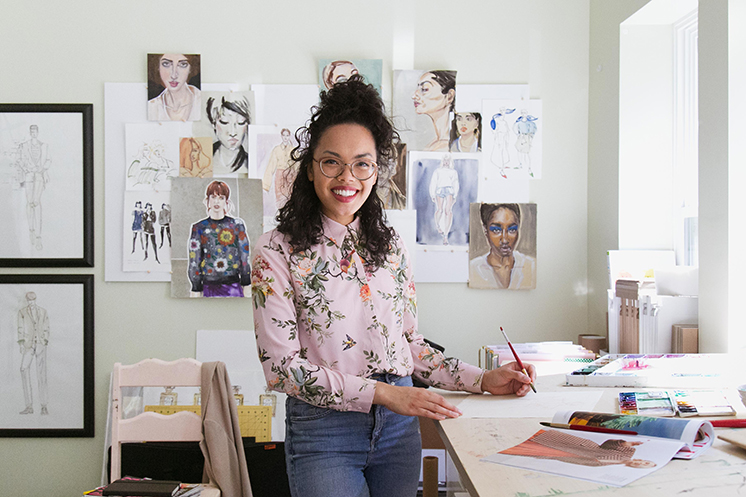
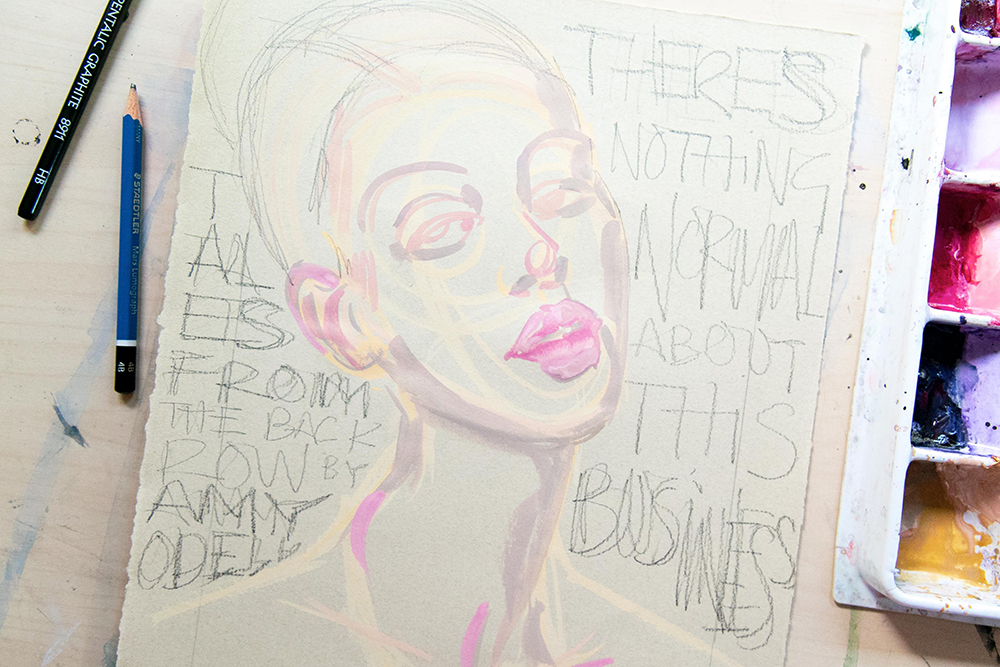
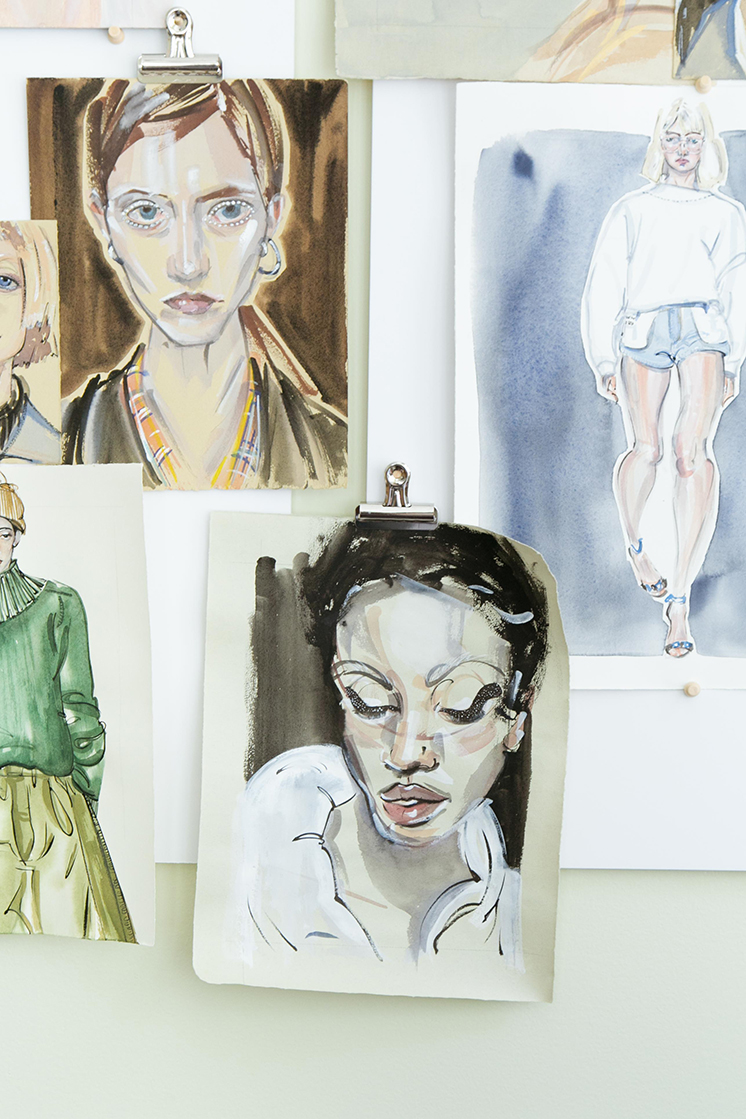
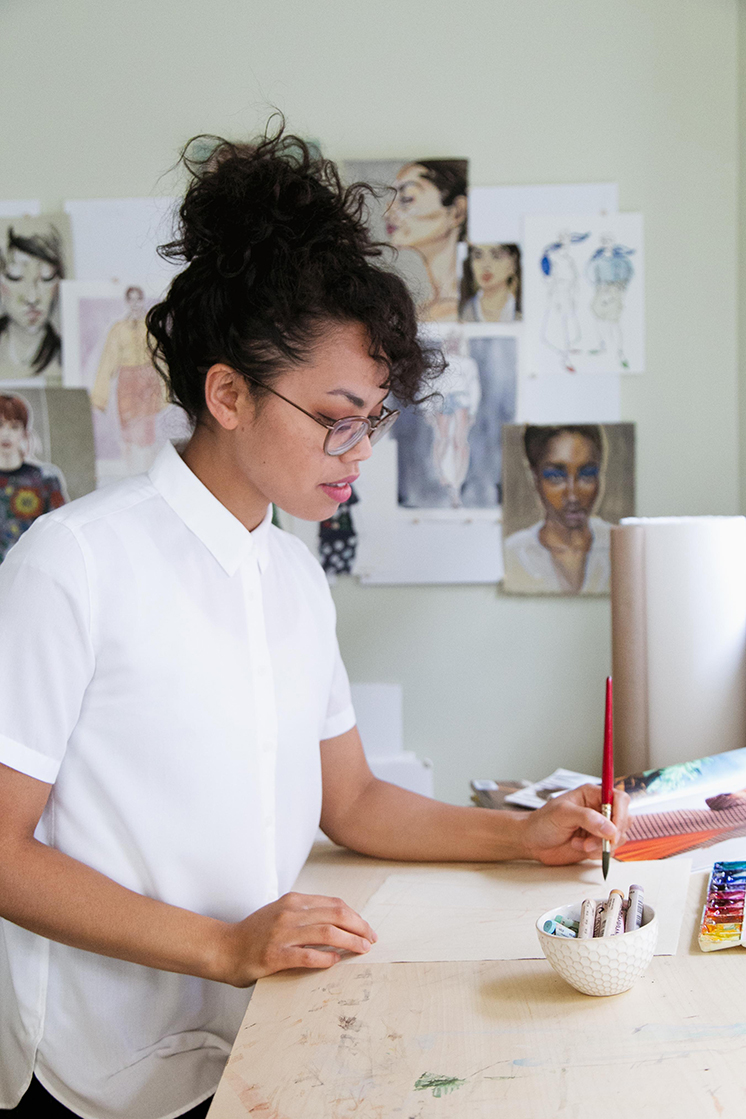
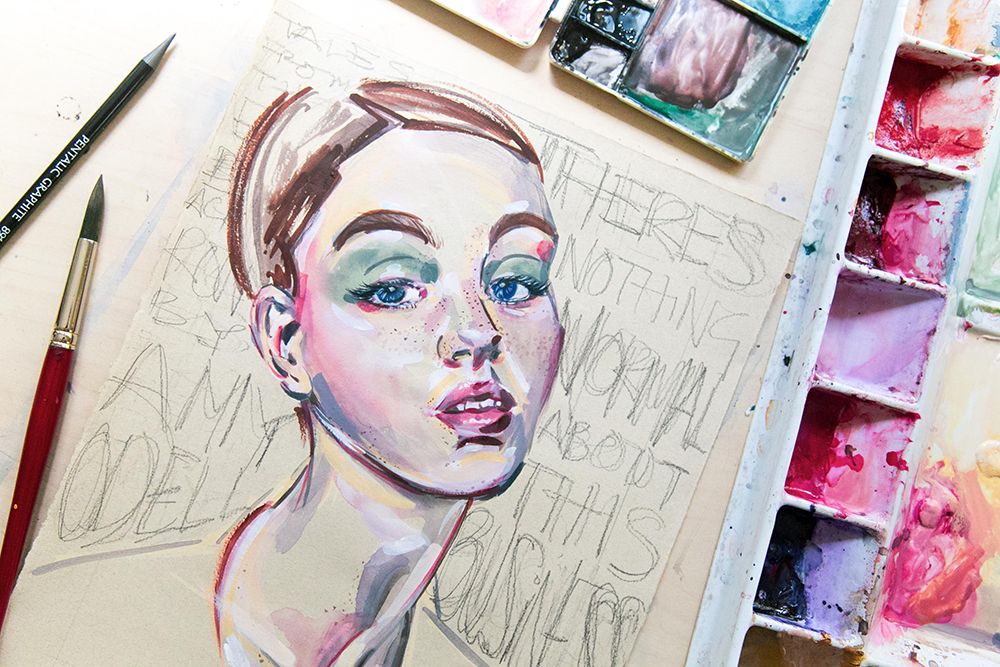
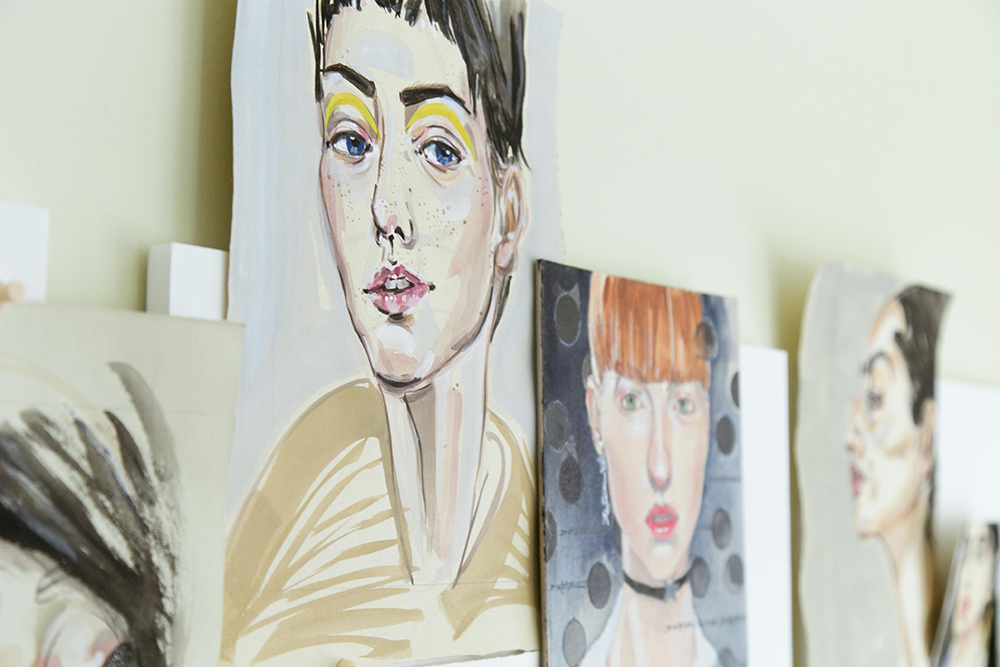

Comments